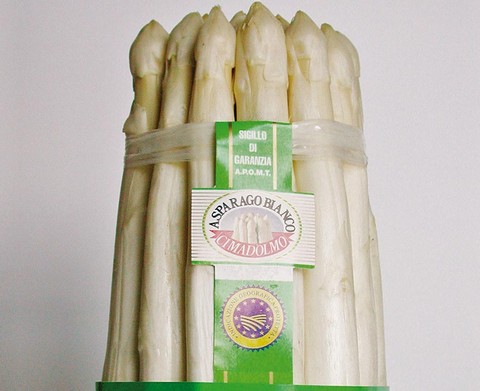
L'asparago era già conosciuto nell'antichità dagli Egizi, Greci e Romani e il nome attuale deriva dal termine latino "asparagus". Detto anche asparagio o sparagio, è una pianta erbacea perenne che vive spontanea e viene coltivata nell'Europa centrale e meridionale. Della pianta si utilizzano, bolliti, i giovani germogli chiamati turioni. L'asparago bianco di Cimadolmo I.G.P. viene coltivato sui terreni sabbioso-limosi di origine alluvionale, permeabili e ben drenati, sulla riva sinistra del fiume Piave in provincia di Treviso, in un territorio che veniva spesso ricoperto dalle alluvioni del fiume.
Gli asparagi delle grave plavensi sono celebratissimi e primeggiano da sempre per qualità. Nel Seicento il Canonico Barpo li lodò tra le cose di cui non si può fare a meno fornendo, assieme alle motivazioni, una serie di ricette ancor oggi validissime. La pregevolezza del prodotto plavense emerse anche dalle prime competizioni fieristiche regionali in voga alla fine dell'ottocento.
Il clima umido-temperato, tipico della zona di produzione, favorisce il rapido accrescimento della coltura, consentendo l'ottenimento di turioni teneri e privi di fibrosità. Si tratta di un ortaggio primaverile, in quanto i primi turioni si raccolgono verso fine marzo e la raccolta prosegue per 15-20 giorni, il terzo anno dopo l'impianto, e per un paio di mesi dopo il quarto anno. Il turione si presenta di colore totalmente bianco, senza sfumature verdi neppure sulla punta; secondo quanto previsto dal disciplinare, deve essere intero, esente da ammaccature ed impurità, privo di umidità eccessiva e odore o sapore estranei.